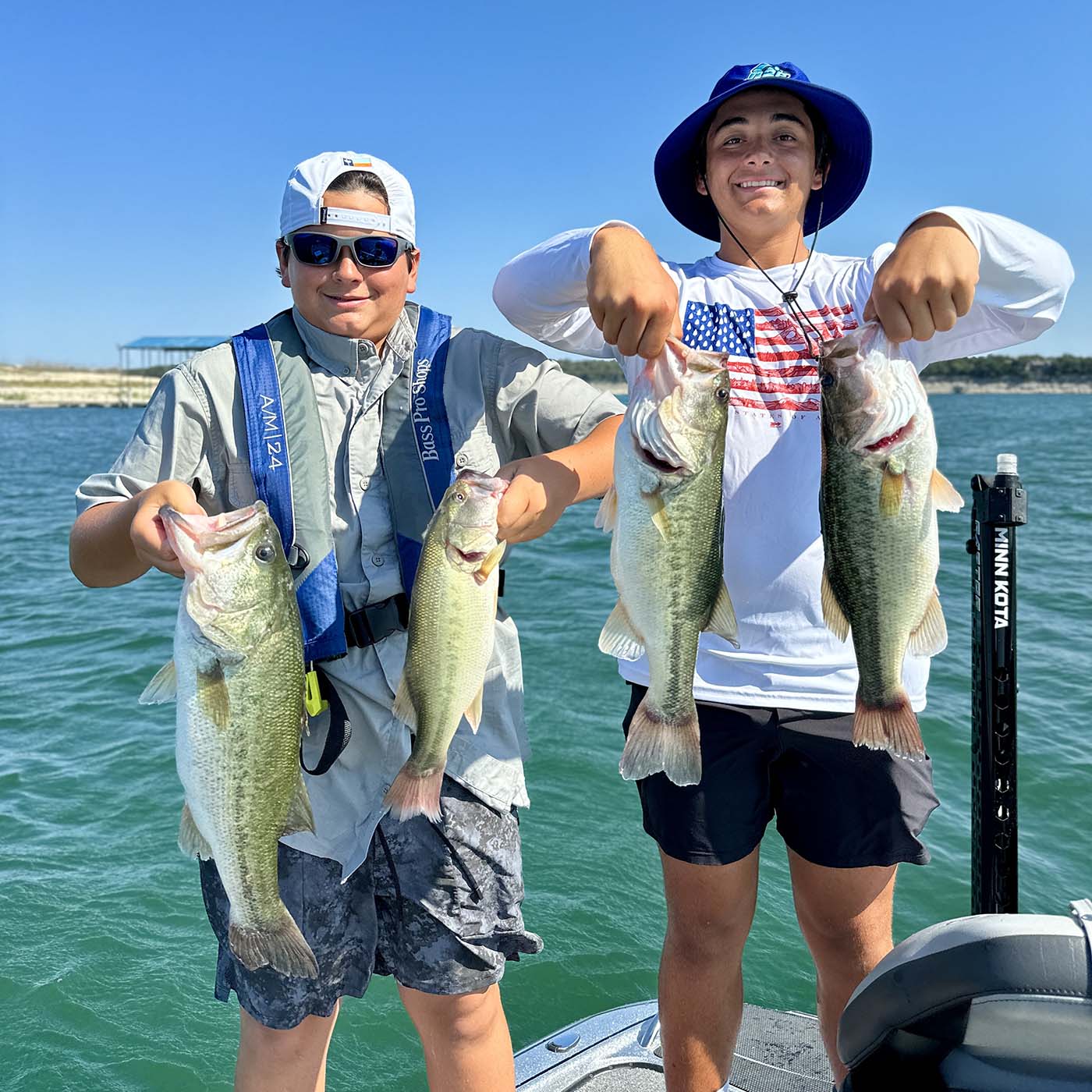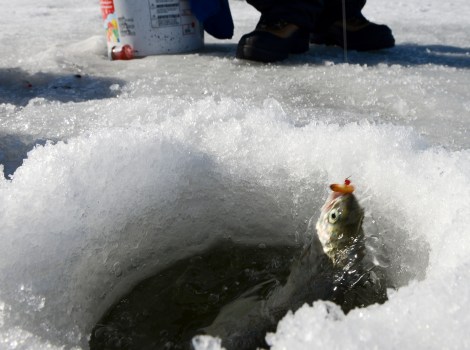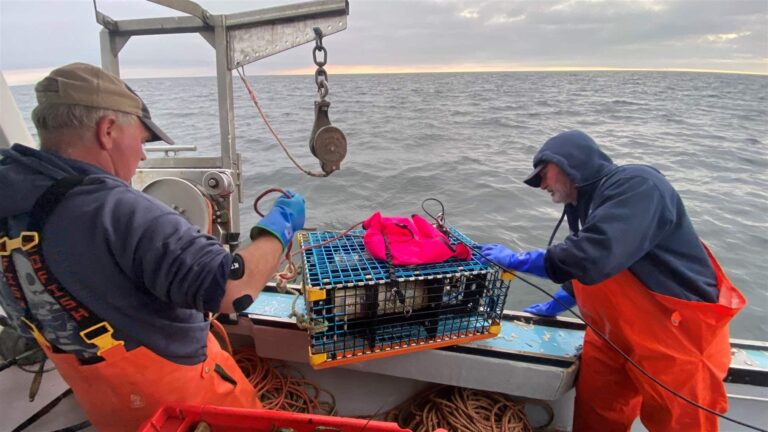15 mph wind is considered strong for fishing as it can disrupt the casting and affect the accuracy of the bait placement. When wind speeds reach this level, it becomes challenging to control the fishing line and maintain stability in the boat.
This can make it difficult for anglers to detect bites and effectively reel in fish. Additionally, strong winds can create choppy water conditions, making it harder to spot fish and causing discomfort for anglers. It is advisable to check the weather and consider fishing in more suitable conditions to enhance the overall fishing experience.

Credit: laketravis.com
Understanding The Impact Of Wind Speed On Fishing Success
Importance Of Wind Speed In Fishing
Wind speed is a crucial factor that can significantly impact your fishing success. Understanding how wind speed affects fishing conditions and fish behavior is essential for any angler. By evaluating wind conditions properly, you can improve your chances of having a successful fishing trip.
Let’s delve into the details of why wind speed matters and how it affects fishing.
How Wind Affects Fish Behavior
Fish are highly influenced by the movement of water, and wind plays a significant role in creating water currents. Here’s how wind affects fish behavior:
- Current generation: Wind causes water movement, generating currents that carry food and various organisms. Fish are attracted to these areas, increasing your chances of finding them in places with currents caused by wind.
- Increased oxygen levels: Wind enhances oxygen mixing in the water, leading to increased oxygen levels. Fish thrive in these oxygen-rich environments and are more likely to be active and feeding.
- Temperature regulation: Wind can affect water temperatures. On warm days, a gentle breeze can cool the water, making it more comfortable for certain fish species. On the other hand, during colder seasons, wind can push warmer surface waters to one side, cause upwelling, or mix layers, affecting the distribution of fish.
Understanding how fish respond to different wind conditions is essential for selecting the right fishing spots and techniques.
Key Factors To Consider When Evaluating Wind Conditions For Fishing
When evaluating wind conditions for fishing, there are several key factors to consider. These include:
- Wind speed: While wind speed of 15 mph may not seem strong in everyday life, it can have a significant impact on fishing. Higher wind speeds can create stronger currents and choppier waters, making fishing more challenging. However, moderate winds can stimulate fish activity, making them more likely to feed.
- Wind direction: The direction the wind is blowing can determine where fish will be congregating. Fish often gather on the side of the water body where the wind is blowing from. Paying attention to wind direction can help you select the right fishing spot.
- Water structure: The wind’s effect on water structure, such as creating waves or ripples, can affect fish behavior. Some fish species, like bass, become more active when they have cover created by wind-induced waves. Understanding the impact of wind on water structure can guide your fishing strategy.
- Safety considerations: Strong winds can pose safety risks, especially for smaller boats or inexperienced anglers. Before heading out, assess whether the wind conditions are suitable for safe fishing. If the wind is too strong, consider rescheduling your fishing trip for another day.
By considering these factors, you can make informed decisions when planning your fishing trips and increase your chances of success on the water.
Remember, wind speed may vary depending on your location and the specific body of water you’re fishing in. Stay updated on local weather conditions and adjust your fishing techniques accordingly. By understanding the importance of wind speed in fishing and how it affects fish behavior, you’ll be better equipped to have a productive and enjoyable time on the water.
So, pack your gear, analyze the wind, and head out for a memorable fishing adventure!
Optimal Wind Speed For Different Fishing Environments
When it comes to fishing, wind conditions can significantly impact your experience and success. Understanding the optimal wind speed for different fishing environments is crucial for planning your fishing trips. Let’s take a closer look at the best wind conditions for freshwater fishing, the ideal wind speed for saltwater fishing, and the factors to consider when fishing in windy conditions.
Best Wind Conditions For Freshwater Fishing
- Light to moderate winds ranging from 5 to 15 mph are generally considered ideal for freshwater fishing.
- Gentle breezes help facilitate a natural presentation of bait and lures, making it easier to attract fish.
- On windy days, fish tend to concentrate in areas protected from the wind, such as coves, pockets, and rock formations.
- Wind-induced wave action can create an oxygen-rich environment, attracting fish to shallow areas.
Ideal Wind Speed For Saltwater Fishing
- Saltwater fishing often requires slightly stronger winds, typically ranging from 10 to 20 mph.
- Moderate winds help create enticing choppy waters, which are known to improve fishing conditions in saltwater environments.
- Inshore fishing can benefit from onshore winds that bring baitfish closer to the shore, attracting larger predator species.
- Offshore fishing may require higher wind speeds to create the necessary current for trolling and attract pelagic species.
Factors To Consider When Fishing In Windy Conditions
- Safety should always be the top priority. Check weather forecasts and be cautious of high winds that may make boating or shore fishing hazardous.
- Wind direction is crucial as it affects water movement and the behavior of fish. Consider how wind will impact the areas you plan to fish.
- Casting accuracy can be challenging in strong winds. Adjust your casting technique and use heavier lures or sinkers to compensate for the wind.
- Take advantage of wind-created structure or cover, such as fallen trees, where fish may seek refuge from the current.
- Stay flexible and adapt your fishing approach accordingly. Wind often pushes baitfish closer to shorelines or into specific areas, so be observant and adjust your location and tactics as needed.
Remember, wind can be a double-edged sword when it comes to fishing. While it creates favorable conditions in some instances, it can also make fishing more challenging in others. Understanding the optimal wind speed for different fishing environments and considering the factors mentioned above will help you make the most of your fishing trips, increasing your chances of success.
Stay informed, be prepared, and enjoy your time on the water!
Tips For Fishing In 15 Mph Wind And Achieving Success
Strategies To Maximize Fishing Productivity In 15 Mph Wind
When faced with 15 mph wind conditions, fishing can become more challenging. However, with the right strategies, you can still have a successful fishing trip. Here are some tips to help you maximize your fishing productivity in windy conditions:
- Choose sheltered fishing spots: Look for areas that offer natural or man-made barriers to help shield you from the wind. This could be a cove, a breakwater, or areas with thick vegetation. These spots can provide calmer waters where fish are more likely to gather.
- Fish close to the shore: In windy conditions, fish tend to move closer to shore as they seek shelter and find food. By fishing near the shore, you can increase your chances of hooking a fish.
- Adjust your casting technique: Casting directly into the wind can be challenging. Instead, cast with the wind at your back, letting it carry your bait or lure farther. This technique will help you cover more ground and increase your chances of attracting fish.
- Use heavier lures or sinkers: The wind can make your line drift, affecting the accuracy and distance of your casts. To counteract this, consider using heavier lures or sinkers. They will help your bait sink faster and maintain better control over your line.
- Stay vigilant: Windy conditions can make it difficult to detect bites or subtle changes in your line. Pay close attention to any movements or tugs, as fish may hit your bait with more force due to the windy conditions.
Equipment And Gear Recommendations For Windy Conditions
To tackle the challenges posed by 15 mph wind while fishing, it is essential to have the right equipment and gear. Here are some recommendations to help you stay prepared:
- Longer fishing rod: Opt for a longer fishing rod when fishing in windy conditions. A longer rod allows you to cast farther and provides better line control.
- Sturdy fishing line: Choose a fishing line with a higher pound test to withstand the added strain from the wind. A heavier line will reduce the risk of breakage and allow for better control when reeling in fish.
- Wind-resistant reel: Invest in a reel specifically designed to handle windy conditions. These reels often have higher gear ratios and better drag systems, allowing for easier line retrieval even in strong winds.
- Windproof clothing: Dress appropriately for windy conditions. Wearing windproof clothing, such as waterproof jackets and pants, will help you stay warm and comfortable, enabling you to focus on fishing.
- Anchoring system: Consider using an anchoring system to stabilize your boat or fishing platform. This will prevent you from drifting too far and allow for more precise casting and positioning.
Techniques To Adapt Fishing Methods To Windy Situations
To adapt your fishing methods to windy situations, here are some techniques to keep in mind:
- Picking the right bait: Use bait that has a strong scent or creates vibrations in the water to attract fish, despite the wind’s interference. This can include live bait such as worms or artificial lures designed to mimic prey.
- Fish along windward shorelines: Target areas along windward shorelines where the wind is blowing directly towards the shore. The windblown waves disturb the water’s surface, making it more difficult for fish to detect potential threats. This increases your chances of tempting fish to bite.
- Slow down your retrieval: When retrieving your bait or lure, slow down your retrieval speed. This will give fish more time to locate and strike your offering, compensating for the disorientation caused by the wind.
- Experiment with different techniques: If your usual fishing technique is not yielding results in windy conditions, be open to trying alternative methods. Switching to bottom fishing, using a bobber, or employing a drift fishing technique might prove more effective.
By implementing these strategies, using the right equipment, and adapting your fishing techniques, you can still have a successful fishing experience even in 15 mph wind conditions. With perseverance and a little adjustment, you may even find that fishing in the wind adds a new level of excitement and challenge to your angling adventures.
Conclusion
To determine whether 15 mph wind is strong for fishing, it’s important to consider various factors. Fishing in windy conditions can certainly present challenges, but it is not impossible. Wind speed affects the movement and behavior of fish, and can impact casting accuracy and boat control.
While 15 mph wind may not be considered excessively strong, it can still pose difficulties for anglers. However, experienced fishermen know how to adapt to these conditions by using different techniques and adjusting their approach. A few strategies include seeking sheltered areas, utilizing heavier lures or sinkers, and adjusting casting angles.
It’s also crucial to prioritize safety by wearing appropriate clothing and using caution when maneuvering on a boat. By planning ahead, adapting to the conditions, and employing the right techniques, anglers can still enjoy a successful fishing experience even in 15 mph winds.
Ultimately, fishing in windy conditions can add an element of challenge and excitement to the sport.





